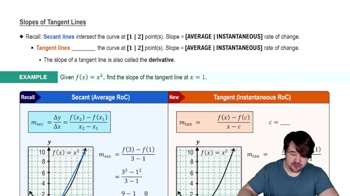The table gives the position s(t)of an object moving along a line at time t, over a two-second interval. Find the average velocity of the object over the following intervals. <IMAGE>
a.
 Verified step by step guidance
Verified step by step guidance Verified video answer for a similar problem:
Verified video answer for a similar problem:



 6:47m
6:47mMaster Finding Limits Numerically and Graphically with a bite sized video explanation from Patrick
Start learning